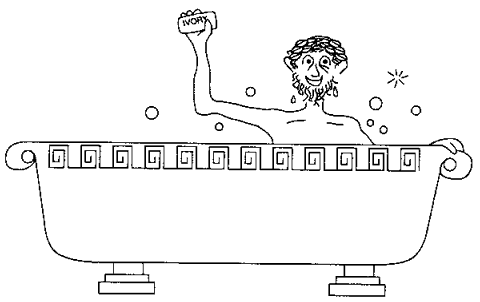
This Article From Issue
March-April 1998
Volume 86, Number 2
DOI: 10.1511/1998.21.0
Yes, We Have No Neutrons: An Eye-Opening Tour Through the Twists and Turns of Bad Science. A. K. Dewdney. 179 pp. John Wiley & Sons, 1997. $22.95.
The author, best known for his column "Computer Recreations" in Scientific American, presents eight examples of "science gone wrong." Several chapters are entertaining and accurate, such as his account of nonexistent "n rays" (France's answer to Germany's discovery of x rays at the turn of the 20th century). Dewdney's title comes from the cold-fusion fiasco. The claimed conversion of hydrogen to helium, if real, would have produced enough neutrons to kill the experimenters—something they were aware of but managed to explain away.

From Yes, We Have No Neutrons.
Claims for the discovery of nonexistent phenomena are clearly bad science. But other chapters deal either with the self-promotion of scientists, whose reputable work fails to live up to its advance billing, or with issues that are still controversial.
For example, astronomers Frank Drake and the late Carl Sagan may have resorted to unscientific hype to sustain funding for the Search for Extraterrestial Intelligence (SETI). But Drake and Sagan never claimed that they had actually detected extraterrestrial signals, and their work does not belong in a book whose tone is set by the example of cold fusion. Dewdney is so caught up in his own rhetoric that he writes, "But even if the SETI searchers succeed, triumphantly announcing contact with an alien civilization, this does not mean that the science was good."
Dewdney's own expertise is most evident in his critique of the efficiency of neural networks and of claims that such networks are miniature brains. He could equally well have devoted a chapter to "catastrophe theory," the study of certain singularities in abstract manifolds, which was once touted as the key to applications ranging from cell division to the outbreak of prison riots. In both cases reputable scientists were guilty of exaggerating the potential value of real discoveries.
Dewdney devotes two chapters to issues related to IQ, arguing that we can neither define nor measure intelligence, which would mean that an entire field rests on a false premise. (In contrast, the refutation of cold-fusion claims did not undermine electrochemistry.) Dewdney's view of IQ, which has virtually no support among psychologists, is based on the arguments of scholars (of whom paleontologist Stephen Jay Gould may be the best known) whose training and primary expertise lie in other areas.
Dewdney's inexperience shows when he cites a single 1946 paper as proof that IQ is too malleable to be inherited. The researcher, Bernadine Schmidt, claimed that one-fourth of her subjects gained 50 IQ points after five years. Dewdney notes that this study was "never duplicated," falsely implying that psychologists were too committed to IQ to pursue this line of inquiry. Although the malleability (as opposed to the construct validity) of IQ is controversial within the field, the Schmidt study was dismissed as "… largely if not entirely fraudulent" in Herman H. Spitz's review of efforts to raise the level of intelligence among the retarded (The Raising of Intelligence, Lawrence Erlbaum, 1986).
Dewdney's preface recalls the story of the sorcerer's apprentice. Throughout the book he compares good scientists to sorcerers and bunglers to apprentices. He forgets that a sorcerer's legendary powers are supposed to arise from secret contacts with evil spirits—a disturbing metaphor for science. Even taken at its surface level, this fable does not fit his examples because Dewdney's bad science was done by experienced, often eminent, scientists, not by novices. Experienced scientists who ignore the rules are not apprentices who haven't learned them. On the whole, Dewdney does more to confuse than to clarify the nature of good science.—Malcolm J. Sherman, Mathematics and Statistics, The University at Albany–SUNY
American Scientist Comments and Discussion
To discuss our articles or comment on them, please share them and tag American Scientist on social media platforms. Here are links to our profiles on Twitter, Facebook, and LinkedIn.
If we re-share your post, we will moderate comments/discussion following our comments policy.